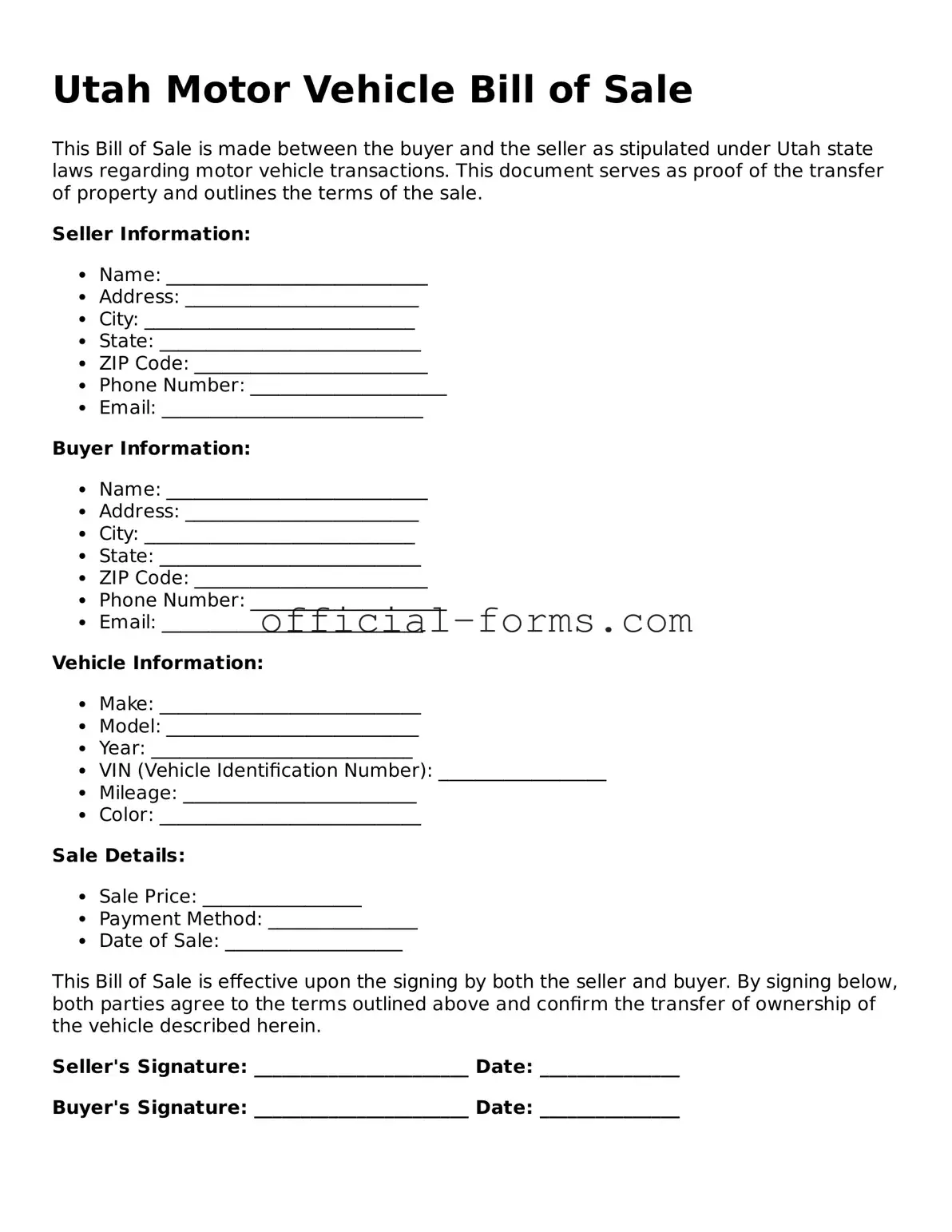Official Utah Motor Vehicle Bill of Sale Document
The Utah Motor Vehicle Bill of Sale is a legal document that records the transfer of ownership of a motor vehicle from one party to another. This form serves as proof of the transaction and includes essential details such as the vehicle's identification number, sale price, and the names of both the buyer and seller. Understanding this document is crucial for ensuring a smooth and legally compliant transfer process.
Open My Motor Vehicle Bill of Sale Now
